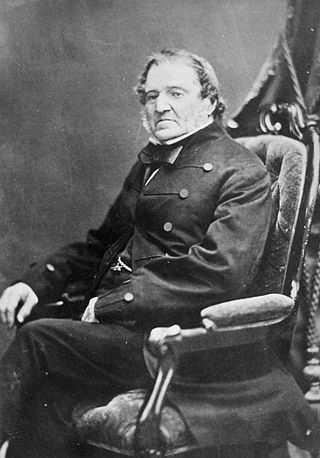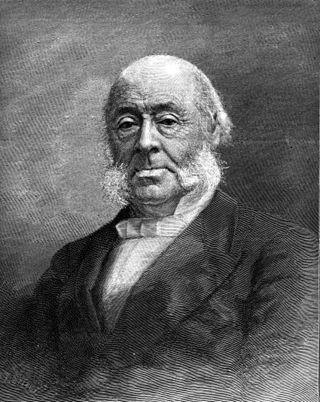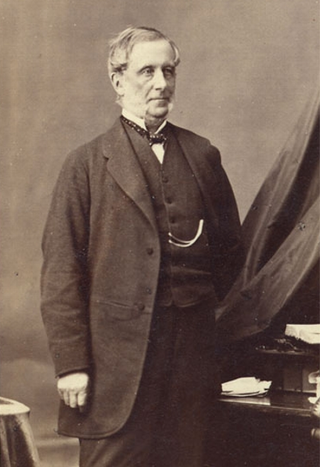Related Research Articles

Elizabeth Palmer Peabody was an American educator who opened the first English-language kindergarten in the United States. Long before most educators, Peabody embraced the premise that children's play has intrinsic developmental and educational value.

William Lyon Mackenzie was a Scottish Canadian-American journalist and politician. He founded newspapers critical of the Family Compact, a term used to identify elite members of Upper Canada. He represented York County in the Legislative Assembly of Upper Canada and aligned with Reformers. He led the rebels in the Upper Canada Rebellion; after its defeat, he unsuccessfully rallied American support for an invasion of Upper Canada as part of the Patriot War. Although popular for criticising government officials, he failed to implement most of his policy objectives. He is one of the most recognizable Reformers of the early 19th century.

Joseph Howe was a Nova Scotian journalist, politician, public servant, and poet. Howe is often ranked as one of Nova Scotia's most admired politicians and his considerable skills as a journalist and writer have made him a provincial legend.

Ludger Duvernay, born in Verchères, Quebec, was a printer by profession and published a number of newspapers including the Gazette des Trois-Rivières, the first newspaper in Lower Canada outside of Quebec City and Montreal, and also La Minerve, which supported the Parti patriote and Louis-Joseph Papineau in the years leading up to the Lower Canada Rebellion.

Hannah Webster Foster was an American novelist.

John Angell James, was an English Nonconformist clergyman and writer.

Emilie Flygare-Carlén was a Swedish novelist.
Samuel Thompson was a Canadian businessman and newspaper editor.

The Melbourne Advertiser was the first newspaper published in Melbourne, in what was then known as Port Phillip District, and now is Victoria, Australia. It was published by John Pascoe Fawkner, a co-founder of Melbourne. The first edition appeared on 1 January 1838, handwritten in ink by Fawkner himself and displayed at his hotel.
Jacob De Witt was a businessman, banker and political figure in Lower Canada and Canada East, Province of Canada. Beginning in the hardware trade, he expanded into steamship transportation on the River St. Lawrence and then banking. He was elected to the Legislative Assembly of Lower Canada and generally supported the Parti patriote, but did not participate in the Lower Canada Rebellion of 1837. After the union of Lower Canada and Upper Canada into the Province of Canada, he was elected to the new Legislative Assembly. He initially supported the reform measures of Louis-Hippolyte LaFontaine, but gradually became more radical, ending his political career as member of the Parti rouge and calling for the voluntary annexation of Canada to the United States. He continued in business, particularly banking, until his death in 1859.

Louis-Michel Viger was a lawyer, banker, businessman, seigneur and political figure in Lower Canada, and then in Canada East in the Province of Canada.

Frédéric-Auguste Quesnel,, was a lawyer, businessman and politician in Lower Canada. He was a member of the Legislative Assembly and the Executive Council of Lower Canada. Following the union of the Canadas, he was elected to the Legislative Assembly of the Province of Canada and later was appointed to the Legislative Council. Throughout his career he was a political moderate, seeking greater political power for French-Canadians under British rule, but also supporting the British connection generally. Condemned by the Patriotes as a vendu ("sell-out") in the Lower Canada Rebellion, in 1860 he was elected President of the Saint-Jean-Baptiste Society of Montreal.

Samuel Irenæus Prime (1812–1885) was an American clergyman, traveler, and writer.

John Young, 1st Baron Lisgar, known from 1848 to 1870 as Sir John Young, 2nd Baronet, was a British diplomat and politician who served as the second governor general of Canada from 1869 to 1872. He was previously the 12th governor of New South Wales from 1861 to 1867 and as Chief Secretary for Ireland from 1853 to 1855.

After the American Revolutionary War, U.S. printers were freed of British copyright restrictions and freely reprinted British works. Upper Canadian printers remained bound by British copyright. American presses quickly took the lead in producing cheap editions and eventually the printing of original work.
Mary Eliza Herbert (1829–1872) was a Canadian publisher and poet. She published and managed the Mayflower, or Ladies' Acadian Newspaper in 1851, making her the first female newspaper publisher in Nova Scotia.

Mary Sophia Hyde Rice, known as Mother Rice, was an American missionary and educator from the United States who settled in the Hawaiian Islands. She was a teacher at Punahou School and matron of Mills College. She was the last surviving member of the original twelve companies of American Board of Commissioners for Foreign Missions (ABCFM) missionaries sent to Hawaii between 1820 and 1848.
Sophia Mort was a 19th-century British children's author who wrote both a textbook for girls' schools and a Christian short story. Additionally, she served as the principal of a ladies' school for young girls that she ran out of various locations throughout her life.
Maria Trumbull (1785–1805) was a published letter writer. She became Maria Trumbull Hudson with her marriage to Henry Hudson. Her father was Governor Jonathan Trumbull Jr.
References
- 1 2 3 I. R. Dalton, “SIMMS, SOPHIA,” in Dictionary of Canadian Biography, vol. 8, University of Toronto/Université Laval, 2003–, accessed August 16, 2017, http://www.biographi.ca/en/bio/simms_sophia_8E.html.